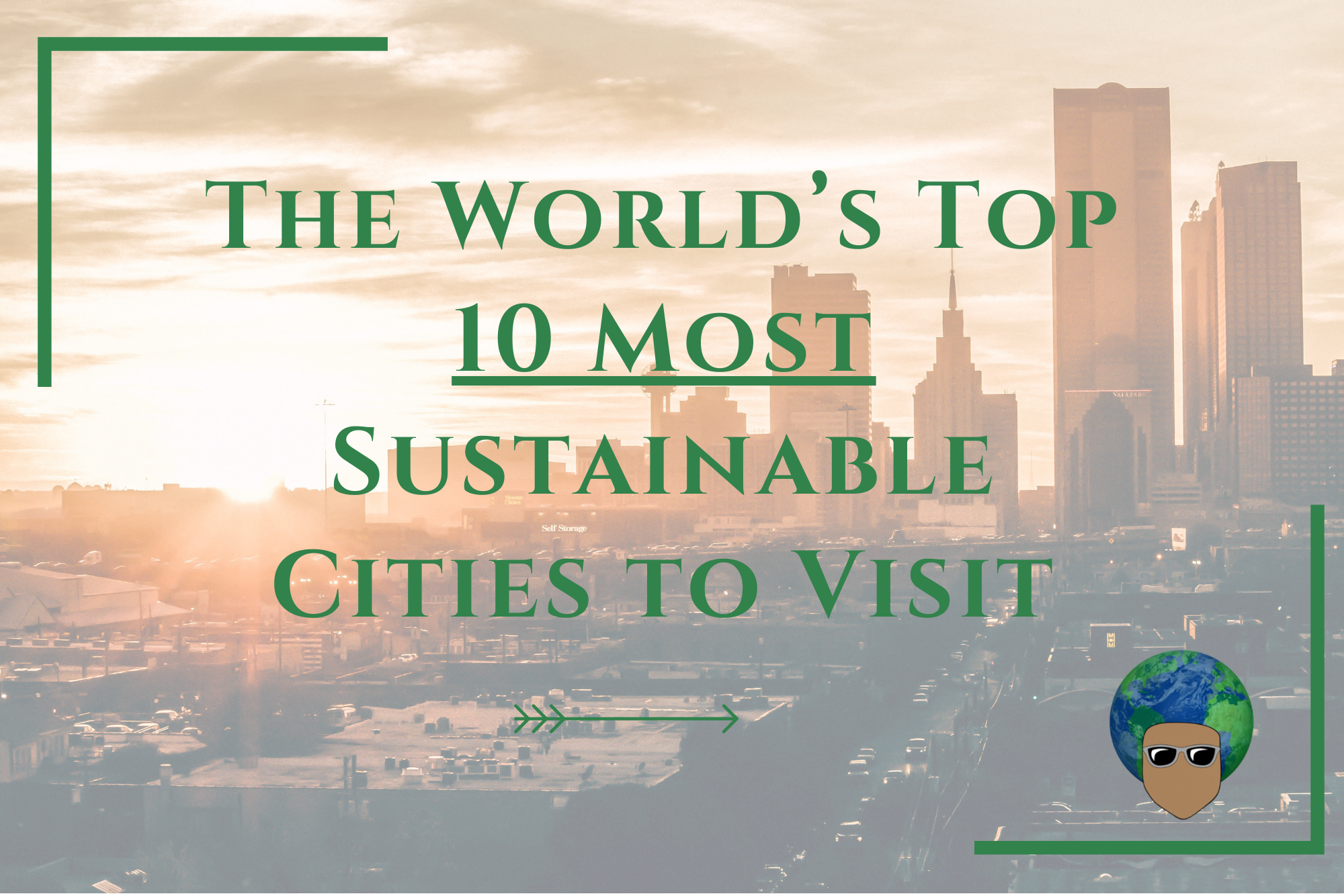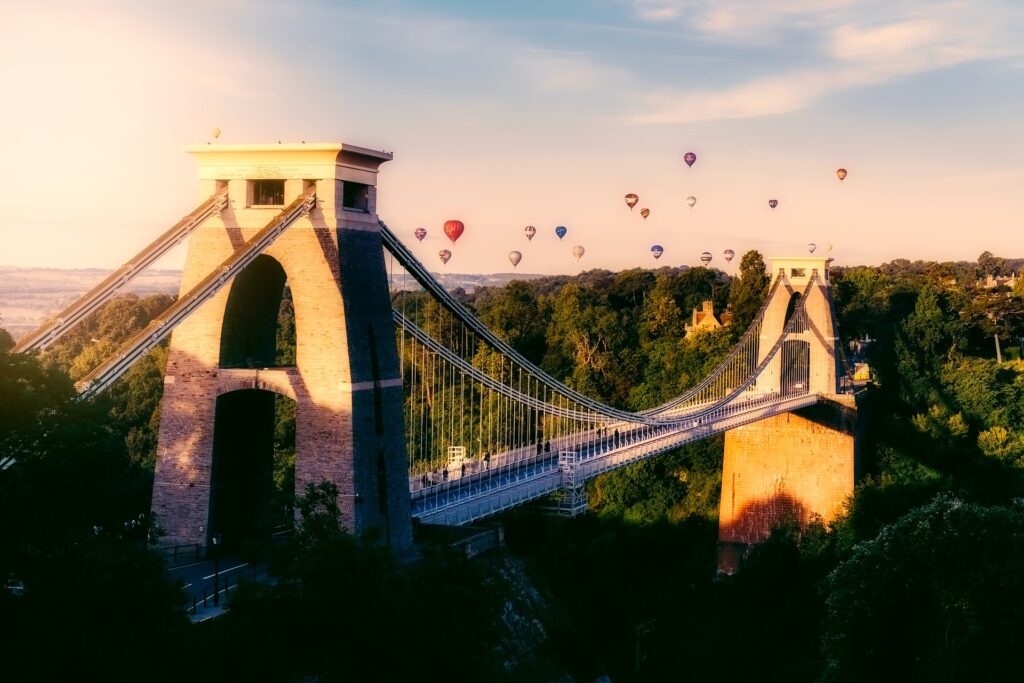The World’s Top 10 Most Sustainable Cities You Should Visit
When thinking of cities, the majority would think of London, Paris and New York, but what if I told you that not 1 out of 3 I just mentioned is in the top 10? Our global cities are full of energy with innovation and the latest cutting-edge technology, yet they’re some of the world’s worst polluters. Do you think you can take a wild guess on what are the most sustainable cities?
I find it difficult to understand what makes one city more sustainable than the other. For example, would a city be sustainable if it promotes renewable energy but not public transport? What if the government doesn’t encourage recycling but pushes towards eco-travel? I’ve explored 10 cities below, which I believe are the top 10, but that doesn’t necessarily mean they’ll stay top 10. It just means, as of yet, they are.
As a traveller, it’s beneficial to understand how sustainability is defined in the cities you visit or plan to visit, as the term itself can be explored in many ways. Opening your eyes to how a city operates to sustainability might push you to apply it to your day-to-day activities or, even better, look into ways to promote it in your local community.
Having visited some of the cities listed below and carried out my research, I gathered sustainably friendly cities. I’ve included destinations that are not ultra-fast-growing (as fast-growing and sustainability don’t seem to work hand in hand). If you’re anything like me, you’ll be interested in places where you can cycle around, stay in eco-friendly hotels/ hostels, and be interested in the local market (I find that you can really absorb the culture in the local markets).
We all know the carbon footprint of travelling by plane is quite hefty, but travelling to an urban destination while leaving a minimal footprint makes it a little better. Below I listed the most sustainable cities to visit and why I would recommend them. I’ve also written a blog on how to become a sustainable traveller which I would recommend giving a read after this!
Bristol, UK
Who would’ve thought out of all the cities in the UK, Bristol would be the only one to make the cut? Did you know that Bristol was the first city to be named European Green Capital? An award like this deserves more recognition as it promotes the innovation of sustainability in urban cities.
Bristol’s counterculture and environmental activities have been going on long before the millennium, from opening the first green bookshops in the 1980s and the growth of city farms to becoming home to the country’s biggest renewable energy supplier (Ecotricity) 2018.
I was surprised when I found out Bristol has a poo bus – the first ever in the UK (this is an ordinary bus except it runs on human and household waste). It’s also classed as the best city in the UK for cycling, due to its culture. Moreover, Bristol has good public transport. Those like myself who live in a populated city would understand the importance of public transport, how it improves air quality and reduces the need for private vehicles. Not only that, but public transport is a great way to explore the city and is pocket friendly. I think that this is a city that you should visit but what do you think?!
Singapore

A city and a country all in one. What’s impressive is that this jewel of a country in South East Asia is the greenest city in Asia, according to the green city index. I’ve had the luxury of travelling Singapore for just under a week before heading to Malaysia (I would’ve stayed longer if the city was a bit more pocket friendly!). Still, when visiting, the first thing I noticed was gleaming towers blended in with the greenery.
As a Civil Engineer by trade, I’m fascinated by infrastructure, and I get mesmerised by how the city incorporated nature into its architecture. Within their impressive eco-friendly programme, Singapore has stated that any greenery lost within the ground must be replaced with greenery in the sky. This includes the stunning parks situated in nearly every neighbourhood and Marina Bay (Singapore’s most iconic hotel for the world’s largest rooftop Infinity Pool), replenishing the air with oxygen and providing a peaceful area for locals and travellers. Singapore is an incredibly modern & innovative city and although the most expensive country in South East Asia – I would highly recommend visiting when in Asia.
Copenhagen, Denmark

Did you know that the Danes were rated the happiest people on the planet? Two years in a row! Sustainability must play some role in this as the city may be the greenest in the world; in fact, Coperngahen won an award in 2014 with the title of “Green Capital Of The Year”.
Copenhagen aims to be the world’s first carbon-neutral capital city by 2025; not only that, but it also aims to become the most cycle-friendly city in the world! Around 55% of the city cycle (isn’t that impressive!). Cycle around, and you’ll witness natural swimming baths, floating saunas made from natural wood and hydrogen-powered taxis. Stay a night or a few in the city’s certified eco-friendly hotels and enjoy the organic foods in public institutions.
Copenhagen even made a power plant to bring joy to the people by constructing an artificial ski slope on the roof of CopenHill!
On a similar note, I’ve been cycling a lot recently, and I would highly recommend it. The benefits of cycling outweighs the negatives; it’s environmentally friendly, easy to explore with and a way of keeping fit, its also been known to be great for your mental health.
Ljubljana, Slovenia

Not many people know of the city, but those that do, know it for its historic architecture and beautiful castles. What people don’t know is that Ljubljana is a city with a green soul and holds the title of European Green Capital 2016. More than 75% of the city is covered in greenery, and it has more than 200 km of cycling route, thanks to the positive example set by Copenhagen. Imagine if most cities decided to learn from other cities and implement the positives; where would we be now? One thing I do know is that we would’ve been in a better position than we are now.
What I recently found out is that Ljubljana character was defined by the famous architect Jože Plečnik and that sustainability was implemented in many of his works. The city portrays sustainability in many aspects, focusing on the natural environment and blending it with the city. So the question to ask yourself, should architects look to push and promote sustainability in their designs? To me, the answer is simple. It’s a definite yes.
Vancouver, Canada

For all you travellers out there that love the outdoors, Vancouver would be the city for you, with forests, beaches and mountains all within close distance to the city. The cities capita greenhouse emissions (GHGs) are among the lowest in North America and runs over 90% of renewable energy (85% being hydroelectricity), aiming to go to zero waste by 2040.
I enjoy getting on public transport, walking around and cycling, especially in a country I’m new in, as you get to experience the culture and see local faces. Vancouver has a friendly and reliable transport system. When they registered their bike scheme, about half a million people registered in the first year, this proves to me that people are for sustainability (whether they may know it or not).
The city is also committed to bringing more greenery, and they’ve proved this by planting more than 150,000 trees since 2010 (which will make your cycling and walking around more joyful!).
San Francisco, USA

Of all the cities in the United States, San Fran outranks them all with sustainability. They boast a range of innovative solutions, practices and policies that ensures environment accountability is embedded in their core values.
Vegan cuisine has become a massive part of San Francisco’s diet. Restaurants are turning Californian favourites foods, like Mexican food, into vegan options. Vendors are maximising purchases from local farms that are growing their food sustainably, which avoids damage to natural resources and provides social benefits, such as safe and healthy products, and not to mention contributing to the local economy.
Most large cities and their residents in the US are far behind in living a waste-free lifestyle compared to San Fran. Not only has plastic bags been banned since 2007, but recycling is now required by law. The city is on the verge of becoming waste-free and commits to using solar energy.
Vienna, Austria

About half of Vienna is green space! So by default, this makes Austria one of the greenest cities in the world. When it comes to sustainability and protecting the environment, Viena does more than just pretty well; it is internationally recognised for its conservation and eco standard, including wastewater management, water supply and air quality. Speaking of water supply, another interesting fact I found out is Viennas natural spring water comes out of the city’s drinking water taps.
In simple terms, if you love to walk then, Vienna is worth visiting as you’ll get to take in all the beautiful greenery and if you like to cycle, then you should know that the cycle paths in Vienna stretch to 1,300 kilometres and there are numerous rental stations for bikes to help you experience the city. Finally, if you’re feeling to get public transport, it still works out perfectly as almost half of the city’s inhabitants use it.
Munich, Germany

A city in Germany had to make the cut; after all, they got the 3 B’s: Beer, BMW and one of the best football teams in the world, Bayern Munich. As well as sport and automotive excellence, Munich is leading the way when it comes to sustainability.
Munich plans to outdo other cities by climate change, aiming at 100% clean energy by 2025. The city’s population isn’t getting any smaller, and Munich knows this, which is why they’ve invested around 9 billion euros into clean energy projects, such as a hydro plant along a river inside the city and a solar panel in Spain. You’re probably thinking, why did he mention Spain?! Well, if you must know, the EU’s electricity grid is linked. Clean energy benefits the entire region.
I’m a huge fan of offshore energy (I mean, I even done a dissertation in it when I was in university). So I found it impressive that Munich’s utility company, Stadtwerke München has invested in offshore wind projects – including one on Sylt Island in northern Germany. By 2025, Munich plans to be the first city in the world to be entirely self-sufficient in renewable energy – thanks to the power of offshore wind energy. It is essential to know that this will provide key economic stimuli and make an important contribution to the success of the German energy transition.
Madrid, Spain

If you haven’t noticed by now, most of the cities I mentioned are in Europe, and I’d like to finish off with one of the most beautiful capitals, Madrid. With eye-catching artwork, beautiful greenery that expands more than 250,000 hectares, eco-friendly accommodation and farmers markets, you’ll have a blast travelling this city. Unfortunately, I only spent two days in this city but I definitely would like to go back and explore it better.
I feel that everyone should aim to travel sustainably. But if you’re feeling to grab a taxi instead of walking, cycling, or getting public transport, feel at ease as all the new taxis in Madrid are ecological and either electrical or hybrid. As well as having eco-friendly taxi’s, Madrid also provides solar-powered tour boats, cars and scooter sharing. That is 100% ecological.
Eco-friendly accommodations can easily be found in the city, from buildings that implement bio-architecture to hostels designed to incorporate sustainably, reducing water and energy consumption and waste.





